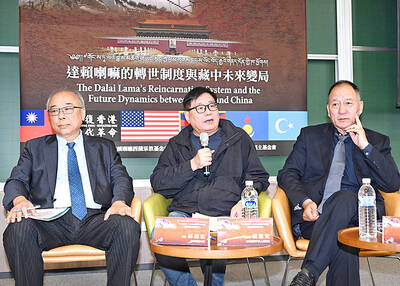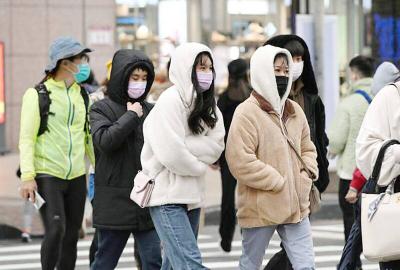The Ministry of Foreign Affairs (MOFA) has submitted a budget of NT$29.53 billion (US$1 billion) for fiscal year 2021, citing an increase in international cooperative projects and assistance provided to other nations.
That is NT$1.44 billion more than the budget submitted last year, and includes NT$1.63 billion more for international cooperation and assistance projects than was allocated two years earlier.
The ministry has planned development projects in ally nations affected by the COVID-19 pandemic, including a team of experts that would work with Caribbean and Latin American countries, of which it has budgeted NT$62 million, as well bilateral and multilateral projects with several countries that would cost about NT$1.49 billion.
It has also budgeted NT$77 million for an international catastrophe relief fund.
The NT$29.53 billion budget includes NT$27.1 billion of allocations that are publicly viewable, NT$1.04 billion of allocations that are classified, NT$1.26 billion for the Bureau of Consular Affairs and NT$88 million for the ministry’s Institute of Diplomatic and International Affairs.
The ministry said it would be spending NT$13.28 billion on “international cooperation and care.”
Of that, NT$2.76 billion would be budgeted for projects in the Asia-Pacific region, which would include NT$2.2 billion for infrastructure and development projects and the promotion of exchanges with countries that do not have diplomatic relations with Taiwan, as well as NT$480 million to help Pacific island countries deal with the COVID-19 pandemic, it said.
NT$1.55 billion would be budgeted for Africa and the Middle East, which would include NT$1.44 billion for development and medical assistance, the ministry said, adding that the remainder would be spent on staff training, technical cooperation, scholarships and the promotion of exchanges with countries that do not have diplomatic relations with Taiwan.
It said that NT$6.69 billion would be budgeted for Caribbean and Latin American countries, which includes NT$5.62 billion for infrastructure projects for diplomatic allies, training programs and cooperative projects, as well as NT$950 million for pandemic-related economic recovery and women’s economic empowerment.
The ministry said that NT$15 million would be included for costs associated with promoting Taiwan’s inclusion in the Comprehensive and Progressive Agreement for Trans-Pacific Partnership (CPTPP).
The amount is unchanged from what was budgeted in each of the past two fiscal years.
The annual budget also includes NT$12 million — up from NT$6 million last year — for promoting a bilateral trade agreement with the US, as well as a multilateral arrangement that would include other countries, the ministry said.
The government on Friday last week announced that it would be easing regulations on US pork and beef imports, hoping that the move would serve as a basis for talks on such an agreement, said a source, who asked to remain anonymous.
It also hopes to sign a foreign investment promotion and protection act with Canada, the source added.
The NT$12 million would be used to hold symposiums and trade-promotion events, as well as to meet with the governors of different US states, the ministry said.
Minister of Foreign Affairs Joseph Wu (吳釗燮) in March and June hosted a conference promoting Taiwan’s participation in the CPTPP.
The ministry this year also continued its practice of budgeting roughly NT$100 million annually to promote Taiwan-US exchanges, which it said would be spent on meetings with US officials, companies and civic groups.

ALIGNED THINKING: Taiwan and Japan have a mutual interest in trade, culture and engineering, and can work together for stability, Cho Jung-tai said Taiwan and Japan are two like-minded countries willing to work together to form a “safety barrier” in the Indo-Pacific region, Premier Cho Jung-tai (卓榮泰) yesterday said at the opening ceremony of the 35th Taiwan-Japan Modern Engineering and Technology Symposium in Taipei. Taiwan and Japan are close geographically and closer emotionally, he added. Citing the overflowing of a barrier lake in the Mataian River (馬太鞍溪) in September, Cho said the submersible water level sensors given by Japan during the disaster helped Taiwan monitor the lake’s water levels more accurately. Japan also provided a lot of vaccines early in the outbreak of the COVID-19 pandemic,

Kaohsiung Mayor Chen Chi-mai (陳其邁) on Monday announced light shows and themed traffic lights to welcome fans of South Korean pop group Twice to the port city. The group is to play Kaohsiung on Saturday as part of its “This Is For” world tour. It would be the group’s first performance in Taiwan since its debut 10 years ago. The all-female group consists of five South Koreans, three Japanese and Tainan’s Chou Tzu-yu (周子瑜), the first Taiwan-born and raised member of a South Korean girl group. To promote the group’s arrival, the city has been holding a series of events, including a pop-up

TEMPORAL/SPIRITUAL: Beijing’s claim that the next Buddhist leader must come from China is a heavy-handed political maneuver that will fall flat-faced, experts said China’s requirement that the Dalai Lama’s reincarnation to be born in China and approved by Beijing has drawn criticism, with experts at a forum in Taipei yesterday saying that if Beijing were to put forth its own Dalai Lama, the person would not be recognized by the Tibetan Buddhist community. The experts made a remarks at the two-day forum hosted by the Tibet Religious Foundation of His Holiness the Dalai Lama titled: “The Snow Land Forum: Finding Common Ground on Tibet.” China says it has the right to determine the Dalai Lama’s reincarnation, as it claims sovereignty over Tibet since ancient times,

Temperatures in some parts of Taiwan are expected to fall sharply to lows of 15°C later this week as seasonal northeasterly winds strengthen, the Central Weather Administration (CWA) said today. It is to be the strongest cold wave to affect northern Taiwan this autumn, while Chiayi County in the southwest and some parts of central Taiwan are likely to also see lower temperatures due to radiational cooling, which occurs under conditions of clear skies, light winds and dry weather, the CWA said. Across Taiwan, temperatures are to fall gradually this week, dropping to 15°C to 16°C in the early hours of Wednesday